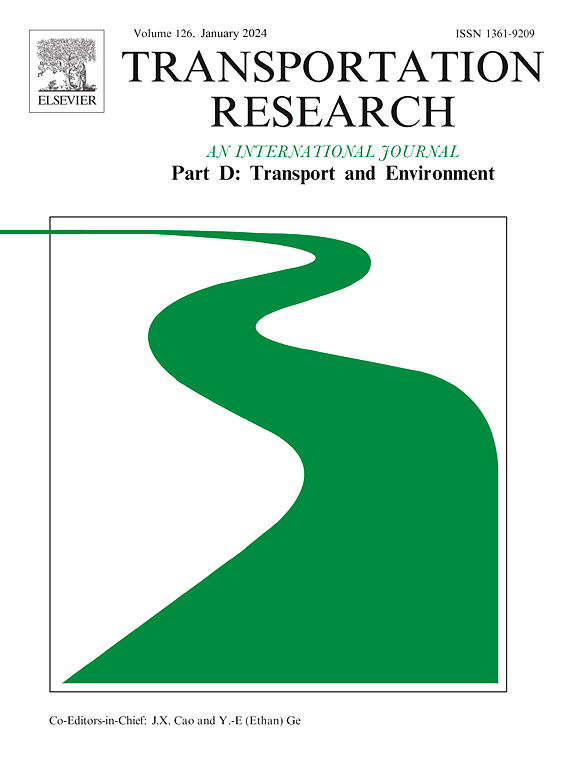Heavy-duty vehicles dominate expressway tunnel environment analysis and emission factor determination
IF 7.3
1区 工程技术
Q1 ENVIRONMENTAL STUDIES
Transportation Research Part D-transport and Environment
Pub Date : 2025-02-01
DOI:10.1016/j.trd.2024.104554
引用次数: 0
Abstract
Vehicle emission factors (EFs) are important factors affecting tunnel environments. In this study, field tests were conducted in an expressway tunnel in southwest China. The percentage of heavy-duty vehicles (HDVs) was approximately 38 %. The NOx concentrations exceeded the safety thresholds. The average CO, NOx, and PM2.5 EFs of the mixed fleet were 1.25, 2.68, and 0.079 g/km veh−1, respectively. The NOx and PM2.5 EFs of the HDV were 31.3 and 14.7 times higher than those of the light-duty vehicle (LDV), respectively. HDVs contributed 61.5 % to CO, 94.8 % to NOx, and 89.3 % to PM2.5 emissions in this investigation. When compared to previous studies, a significant reduction in CO and PM was observed, but NOx remained at a high level. Stricter policies are needed to control the emissions of HDVs, and the ventilation of tunnels must consider the NOx concentration.
求助全文
约1分钟内获得全文
求助全文
来源期刊
CiteScore
14.40
自引率
9.20%
发文量
314
审稿时长
39 days
期刊介绍:
Transportation Research Part D: Transport and Environment focuses on original research exploring the environmental impacts of transportation, policy responses to these impacts, and their implications for transportation system design, planning, and management. The journal comprehensively covers the interaction between transportation and the environment, ranging from local effects on specific geographical areas to global implications such as natural resource depletion and atmospheric pollution.
We welcome research papers across all transportation modes, including maritime, air, and land transportation, assessing their environmental impacts broadly. Papers addressing both mobile aspects and transportation infrastructure are considered. The journal prioritizes empirical findings and policy responses of regulatory, planning, technical, or fiscal nature. Articles are policy-driven, accessible, and applicable to readers from diverse disciplines, emphasizing relevance and practicality. We encourage interdisciplinary submissions and welcome contributions from economically developing and advanced countries alike, reflecting our international orientation.

 求助内容:
求助内容: 应助结果提醒方式:
应助结果提醒方式:


